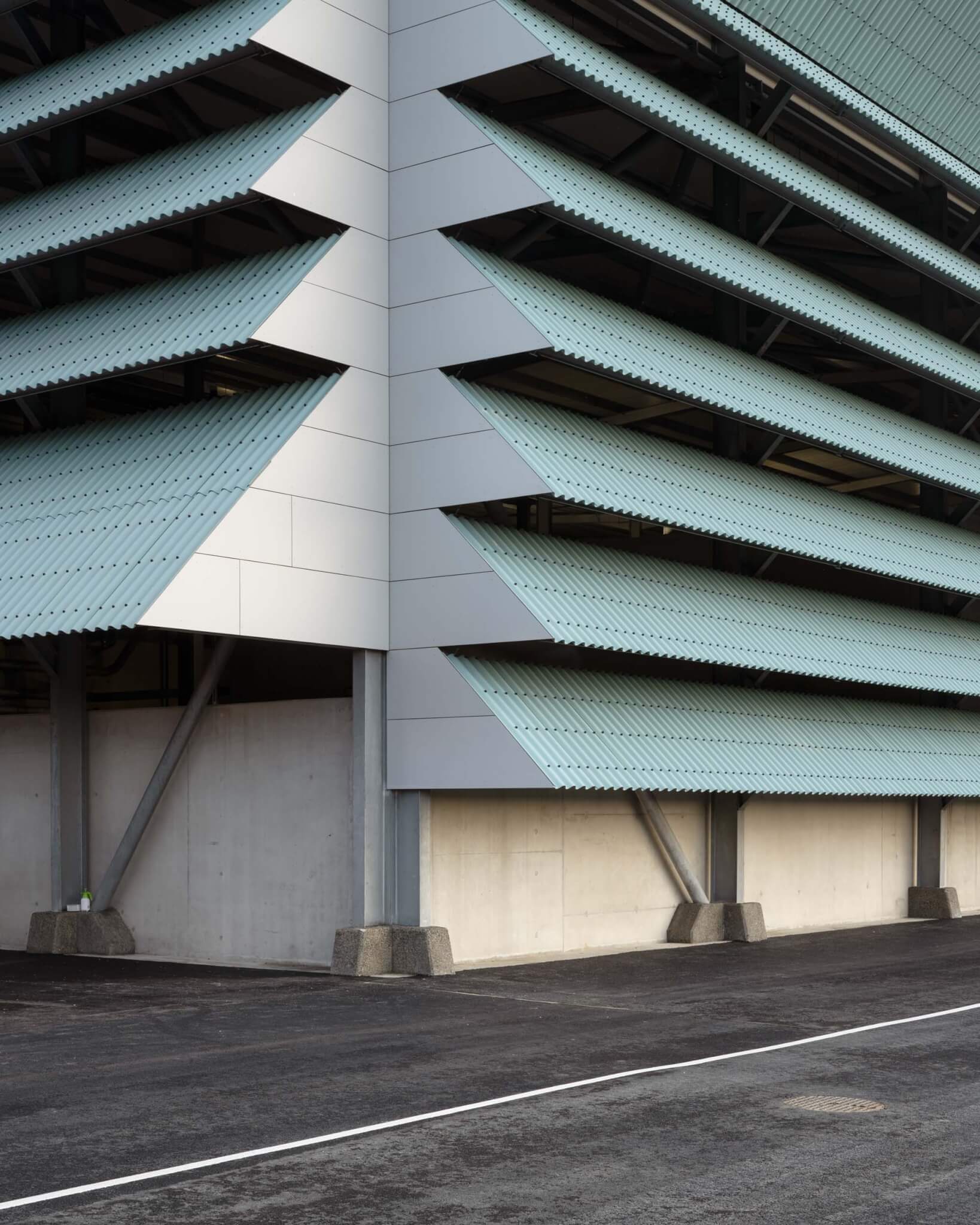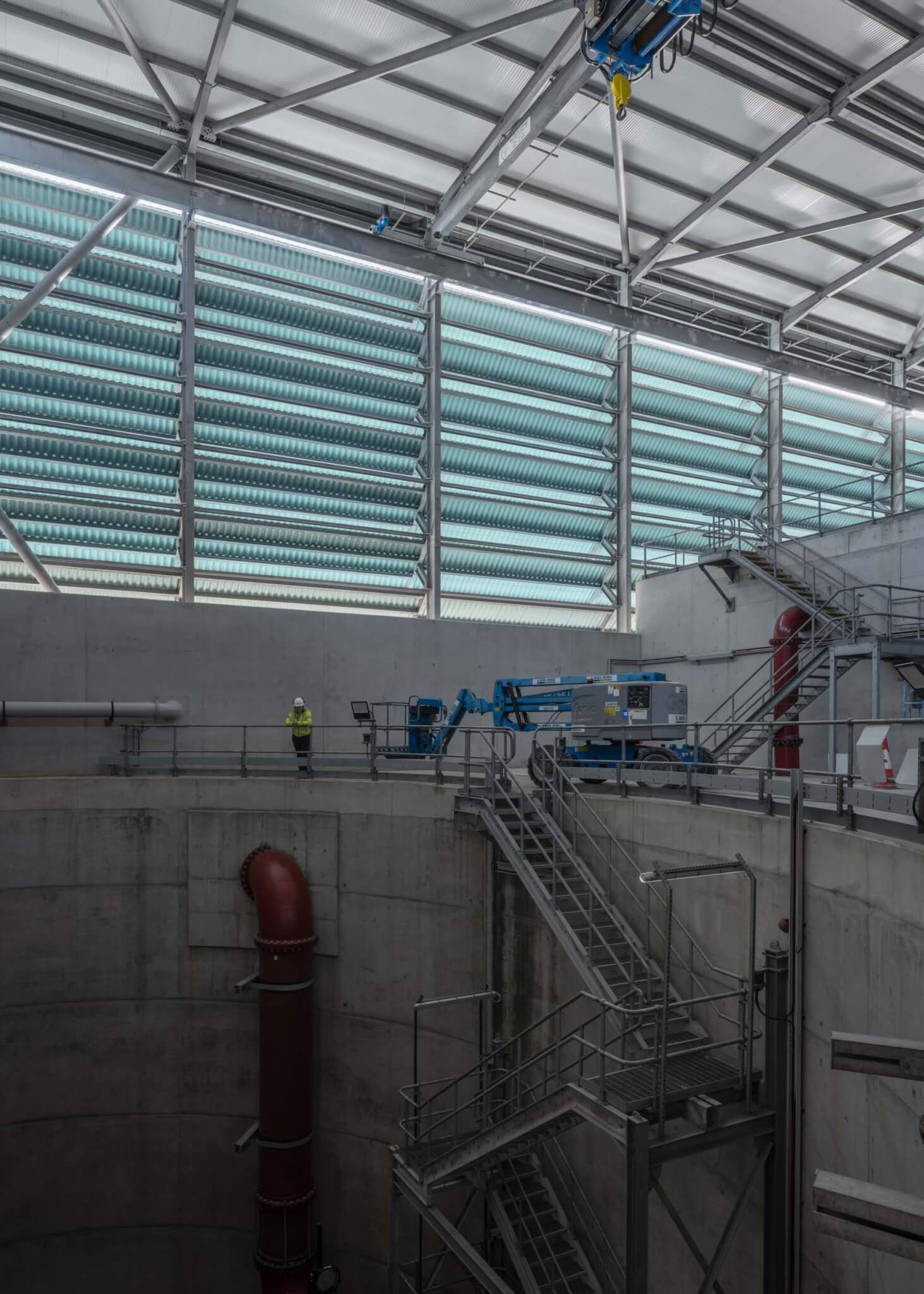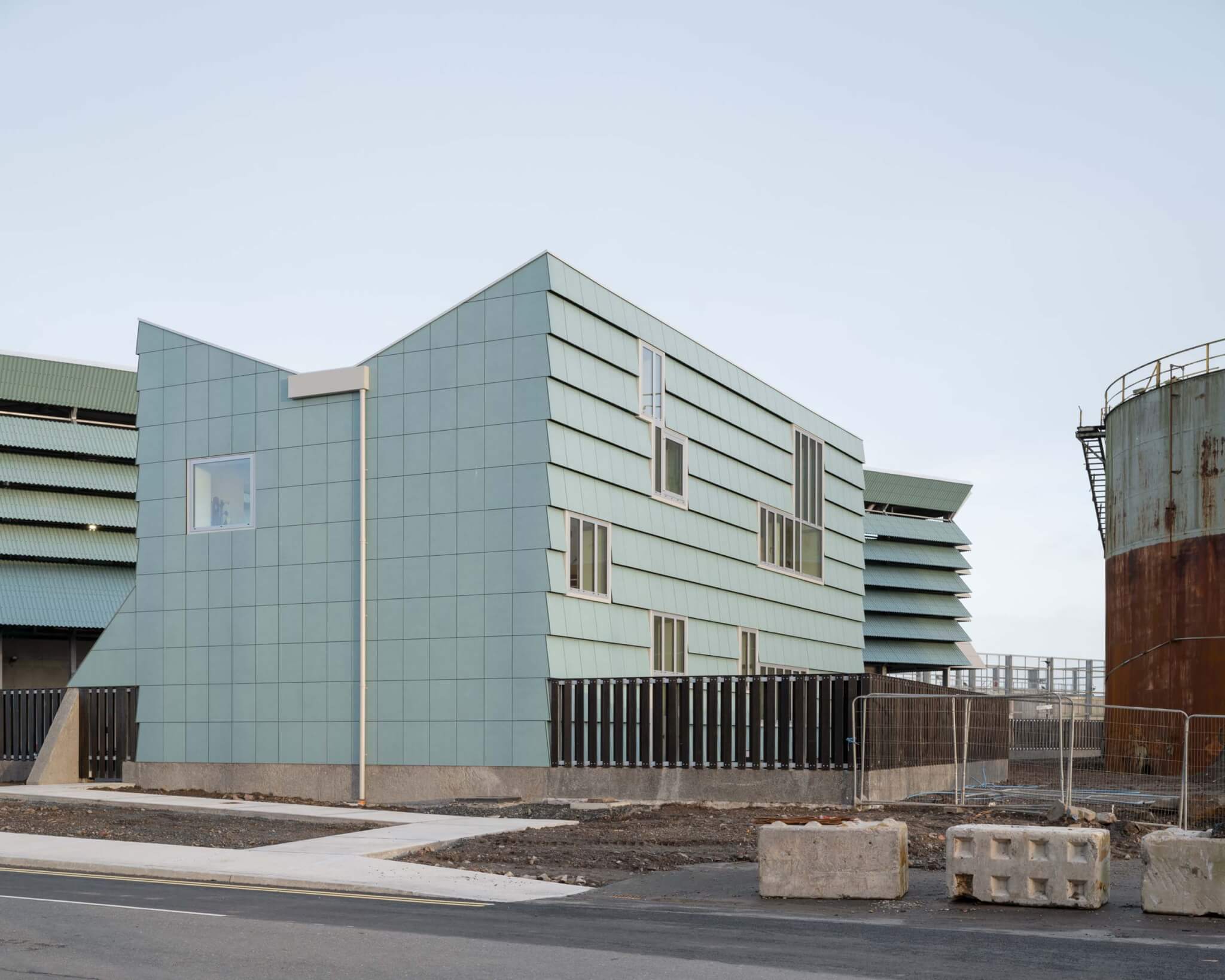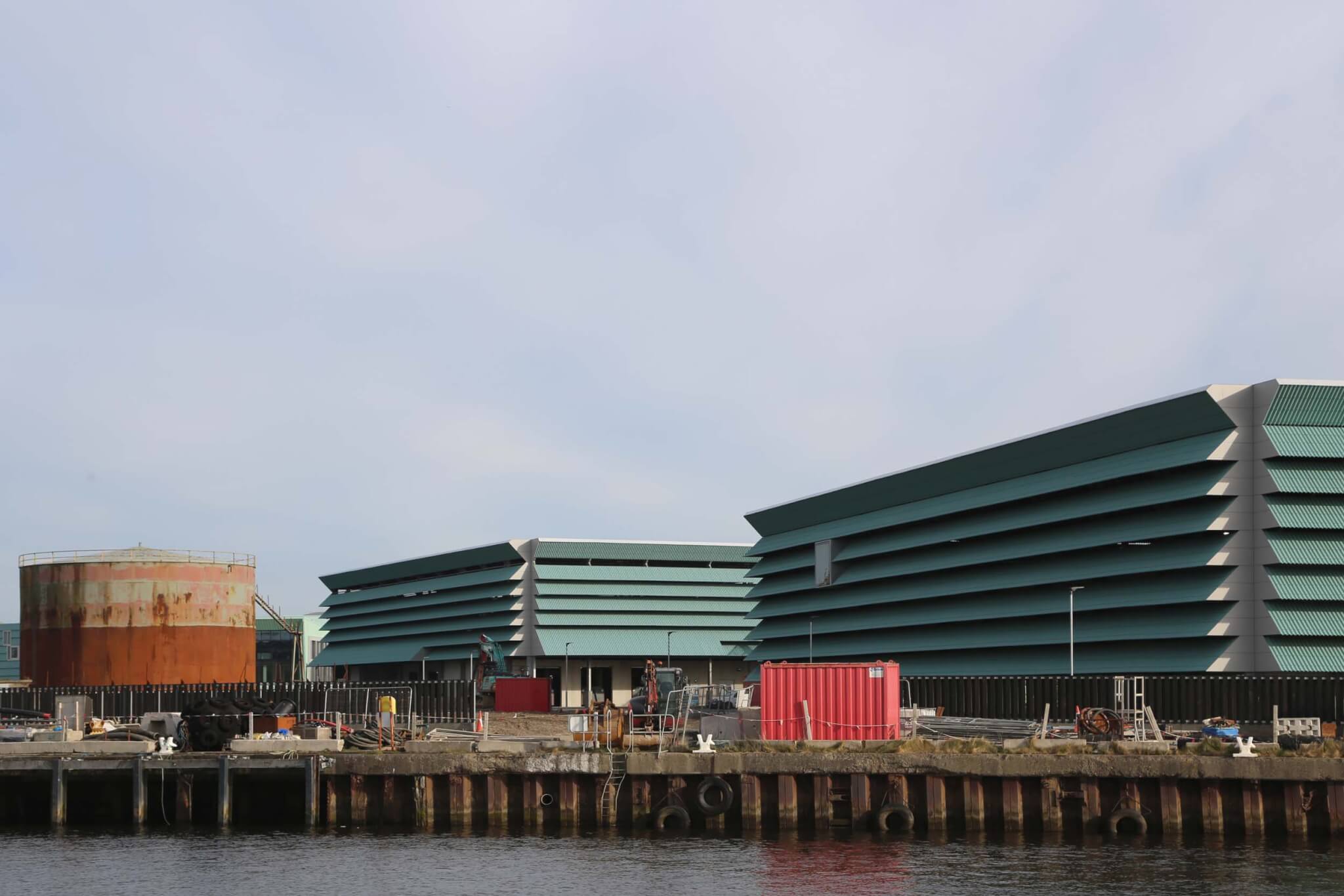- Architect:
- Clancy Moore
- Location:
- Arklow, Ireland
- Completion Date:
- 2025
Today, we might think of sewage containment as a problem of the 19th century, when urban areas developed robust infrastructure to properly collect and dispose of human waste. However, in Arklow, a coastal town on Ireland’s eastern seaboard, this problem was never fully addressed. For close to a century, the municipality pumped raw sewage directly into the River Avoca, where it traveled out to the Irish Sea, severely contaminating the water and nearby beaches.
Growth in Arklow, despite its convenient proximity to Dublin, has remained stagnant for generations because of this privation, with the government imposing a virtual moratorium on new housing development and the Irish Environmental Protection Agency categorizing the River Avoca as “seriously polluted.” Time and again, efforts to build sufficient waste treatment infrastructure were stalled by political disagreements over the appropriate site for the facility and inadequate funding. Finally, in 2016, a location was secured near the mouth of the river.
Because of the site’s visual prominence and proximity to the center of the town, An Board Pleanála, Ireland’s national planning commission, mandated that Uisce Éireann, a public-private water utility, hire an architect to devise the appearance of the new facility. A fully below-grade facility was ruled out for the site due to the severe pollution of its soil from previous industrial use, a condition that would have required immense environmental remediation, making deep excavation cost-prohibitive.
Following an invited interview process, Clancy Moore, a small architecture practice based in Dublin, was awarded the commission despite no prior experience with large infrastructure-scale projects. The firm’s design for the facility considered aesthetics, but was also informed by discussions with numerous consultants on topics as wide-ranging as marine ecology, odor engineering, waste treatment, and more, as well as input from local townspeople.

“To our knowledge, an architect has not been involved in the design of a wastewater treatment plant like this for some considerable time,” Andrew Clancy, cofounder of the firm, told AN. “There are plants from the Victorian period where architects were involved right at the outset, but not many since. Those that are tend to be hired to design a pretty wrapper, whereas we were instrumentally involved with the full team in ordering the processes of the plant.”
Seeking to avoid unnecessary energy consumption, Clancy Moore successfully advocated for the implementation of gravity-powered pumping wherever possible within the facilities, necessitating the vertical orientation of mechanical systems. These internal functions are concealed via an open-air screen of corrugated fiber cement louvers that help circulate air through the interior.

Sewage from the town flows to a “wet well” located beneath the plant where it is then travels up through a series of filters and macerating pumps that remove solid materials like toilet paper from the waste, converting it into a thin liquid. From there, gravity takes its course, and the sewage is repeatedly processed through what are called “sequencing batch reactors,” large chambers that add air and a special biological culture to the sewage, eventually producing two outputs: sludge, a thick, semi-solid material that is eventually processed into pellets and used for energy combustion, as well as water, which is pumped out to the ocean via a roughly half-mile-long outfall pipe.
The plant also features storm water redundancies that allow it to hold weeks worth of sewage in the event of large-scale flooding, as well as effective carbon filter systems that eliminate odor within the facilities. To accommodate the vertical orientation of the plant’s pumping apparatus—which would be arranged horizontally in a typical wastewater facility—the team procured special robotic gantry cranes capable of accessing the machinery.

A smaller structure was designed on the site to house government-operated testing facilities, an outreach and education center, as well as a canteen and changing room for plant employees. The building is clad in flat fiber cement panels of the same color as those wrapping the two large treatment warehouses, and also features a unique, inverted gable rooftop, a motif that has appeared in Clancy Moore’s earlier work.
High density fiber cement panels from Switzerland were used to clad all three buildings because of the material’s long lifespan and need for little maintenance. Cost also drove this choice.
“We knew that in a design-build context, if the architecture were frivolous or expensive in an unjustifiable way, it would be attacked for savings,” added Clancy. “This was also critical for our operator, because as a public utility, if they’re caught quote-unquote wasting taxpayer money on anything as frivolous as maintenance and not putting it into the infrastructure, that’s a problem.”

On the other hand, the cladding’s green color was selected for a variety of reasons more related to Ireland’s cultural history and ecology than practicality. The exact shade of green, however, was repeatedly iterated though a series of panel mock-ups that lead the architects to chose a variation of sea green that was bright enough for legibility from a distance. Clancy admitted that this aesthetic choice was one of the most important and difficult decisions of the entire design process. Another challenge was the townspeople’s initial reactions to the project.
“This town had been badly let down by state infrastructure,” he said. “At the start, people were really annoyed and upset. They were incredibly scared of a big treatment plant in the center of town destroying local land values and their memory of the place.”
However, opinions have changed since the plant began operation. Locals are now able to enjoy Arklow’s river and coastline, swimming and boating freely in the water without fear of infection. Overtime, this improvement is expected to lift the town out of a decades-long economic depression, bringing in previously-prohibited development.
Clancy recalled how one woman began to cry when she realized—that after years of pollution—the beaches were finally free of scum.
Project Specifications
→ Continue reading at The Architect's Newspaper
